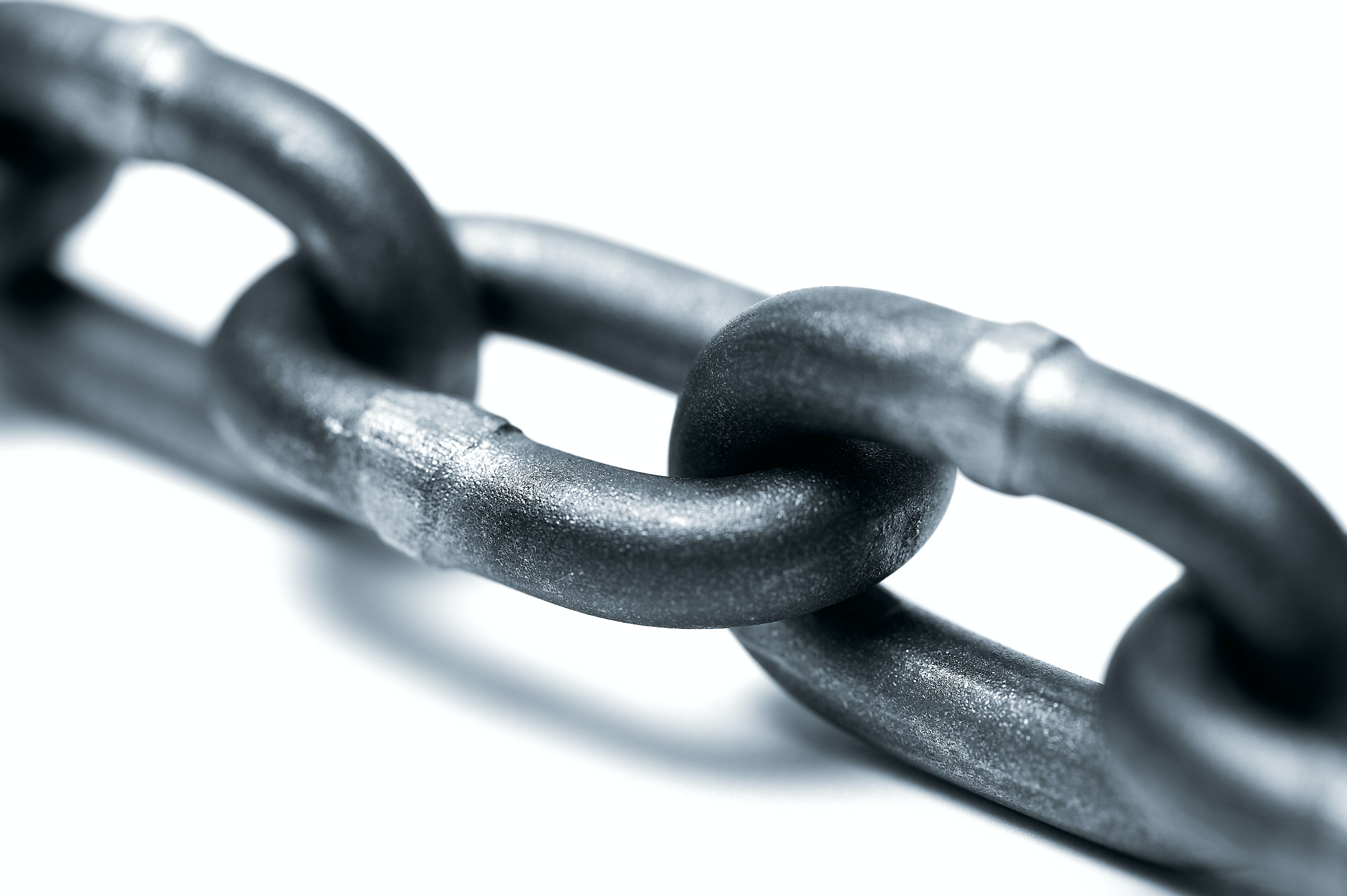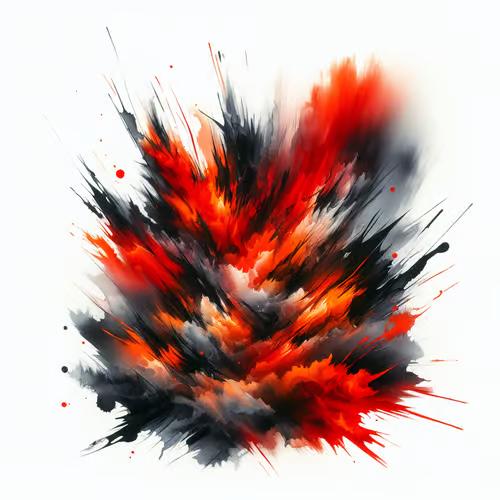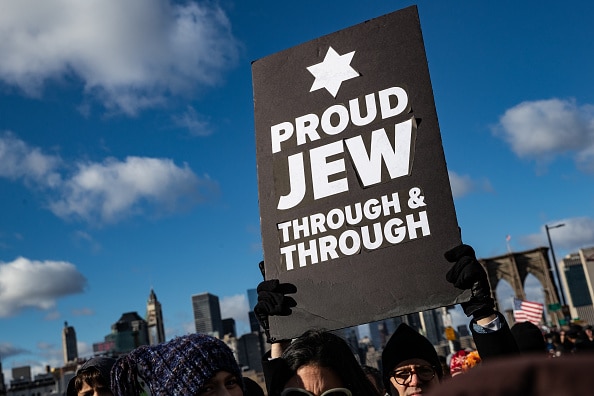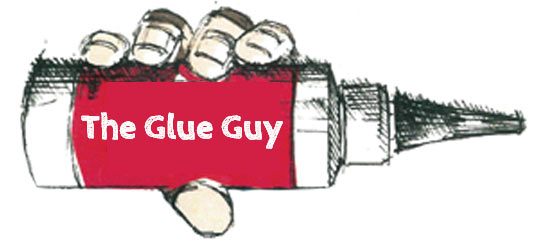December 7, 2021|ג' טבת ה' אלפים תשפ"ב Chanukah 5782 - Jewish Pride Begins at Home
Print Article
There is a great Talmid Chacham who is well-known by name, but not as well-known in terms of who he was. His name is Onkelos. Onkelos is well-known because his Amaraic commentary/translation of the Torah is found in almost every chumash in the world. What is less well-known is how Onkelos came to be Onkelos.
Onkelos lived just after the destruction of the second BHMK, around 100 C.E. He was a member of the Roman royal family. His mother was the sister of the Roman Emperor Hadrian. Over time, Onkelos became interested in Judaism and eventually converted. The Gemara in Avoda Zara tells the story about what happened after Onkelos converted.
At a certain point, Hadrian, the emperor, found out that his nephew had accepted the Jewish religion and had become one of its foremost Jewish scholars. The emperor was furious, and he sent a company of soldiers to arrest Onkelos and to bring him in chains to Rome. When the Roman soldiers arrived, Onkelos greeted them warmly and spoke with them about religion. His thoughtful ideas impressed the soldiers so much that the soldiers threw themselves at his feet and begged him to convert them to the Jewish religion, as he had done himself.
When Hadrian heard what had happened with the first group of soldiers, he sent another company of brave warriors with instructions to bring Onkelos in chains. This time, though, he gave orders not to have any discussions with Onkelos. Onkelos again warmly received the royal messengers. "I know that the Emperor forbade you to have any discussions with me. You must obey the royal command; I will therefore ask you only one question: you know very well what goes on in the Roman, imperial Court. The common soldier carries the torch for the officer; the officer carries it for the captain; the captain for the general and the general for the Emperor. Tell me, for whom does the Emperor carry the torch?"
"The emperor is not serve anyone," they answered him. "He is the highest authority in the country!"
"Take a look," Onkelos answered them. "The G-d of Israel, the Creator of heaven and earth, who delivered the Jews from Egypt, the G‑d over everything, in spite of His greatness, still deemed it fit to lighten the way for His servants, the Jews, with a pillar of fire for forty years!" This dvar Torah made a great impression on the soldiers, and they immediately gave up their mission and even became students of Onkelos.
One more time Hadrian sent a company of troops with high officers at the head, with the express orders not to say one word to Onkelos and not to answer any questions, but to arrest him immediately. The messengers arrived and started to carry out the emperor's orders without delay. They led him out of his house. At the door, Onkelos stopped and kissed the Mezuzah with simcha and with pride.
The messengers stared at him in wonder and could not restrain themselves from asking him: "What does that thing on the door symbolize, and why are you so happy?! We are taking you out in chains to Rome!” Onkelos responded: “A king sits in his palace and has guards around him to protect him from danger. But the Jewish King, HKBH, allows His servants to sit quietly at home and He protects THEM from outside. That is the Mezuzah on our door!" These royal messengers, too, fell under the influence of Onkelos's words, and it did not take long before they also became his faithful disciples. Eventually, Hadrian realized his efforts were useless and left Onkelos alone.
Rav Eliyahu Shlesinger, in his sefer Eile Hem Moadai, points out that Onkelos offered two examples to the soldiers – the mezuzah and the flame of a fire. Why did he use these specific examples?
He answers as follows: Both fire and a mezuzah are a dramatic, public display of our Jewishness. We light our Chanukah candles in our windows and out our doors for all who pass by to see. Similarly, our mezuzah is placed in the doorway. In fact, that’s why we call the parchment with writing on it “mezuzah”, which is really just the word for “doorway”. Because the mezuzah sits at the point where we cross over from our private home to our public lives. When you place a Menorah in your window and a mezuzah on your doorpost you are declaring to the world that in this home there is not only a Jew, but a Jew who is proud of his or her heritage. A Jew who is a Jew not only inside our home, but also as we leave it and head out into the world.
But how did Onkelos have such a profound impact on these soldiers by speaking with them about these two mitzvos? Why was it so powerful? He didn’t say very much! Rav Eliakim Koenigsberg, a Rosh Yeshiva at Yeshiva University explains that really the idea of lighting the Menorah is not about displays of our Judaism out in Town Hall or at the Garden State Plaza. Yes, the Lubavitcher Rebbe felt very strongly about these public displays, and they are beautiful. However, the real mitzvah of neiros chanukah is what the halacha calls “Ner Ish U’Beiso”. It’s about lighting in our home. Just as the mezuzah stands at the entrance to our homes on the right side of the doorway, the chanukah menorah is meant to be placed on the entrance to our home on the left. The ner chanukah is fundamentally a home-based mitzvah.
But if the goal of ner chanukah is Pirsumei Nisa, about getting the word out about the miracle, shouldn’t the real mitzvah be about billboards and advertisements about the neis chanukah!? Why is the mitzvah done in our home?
The answer is that we will never have an impact on anyone else by trying to convince them, by preaching. The way the world learns about HKBH and His Torah is through the actions of those who live a LIFE of Torah. As the gemara in Yuma 86 teaches: When there is a Jewish person who lives a life according to halacha, and acts kindly with others, does business honestly. When someone is a proud Jew in their personal life and carries that pride and menschlichkeit into their PUBLIC life. What do people say? “Ashrei Aviv Shelamdo Torah! How lucky is his or her parents that taught this person Torah. How beautiful Torah and Mitzvos are!”
The way we light up the world is not by our public displays alone. It starts by building ourselves in our own homes. Because if we light our personal ner chanukah, in our home and in our souls, if we are ON FIRE about our Yiddishkeit, living it with PRIDE, and if it is reflective in our conduct with others, then we don’t have to CONVINCE them of anything. They will see for themselves what a beautiful life we live. Onkelos did not convince those soldiers of anything because of his nice divrei Torah. They saw how proud and positive he felt about the life he was living. This made a greater impact than any dvar Torah they could possibly have heard.
And if this is true with the world outside our home, how true it is for those who live with us inside our homes. If we live a life proud of our Judaism BOTH inside and outside our homes, when our children see the consistency of our commitment to who we are wherever we are, that we’re not embarrassed to wear our Judaism on our sleave, they, too, will hopefully learn to carry that pride with them wherever life will take them.
The mitzvah of Ner Chanukah provides us with a remarkable opportunity: To show just how proud we are to be committed Jews, both inside and outside our homes. And in doing so, to provide a model of Jewish pride to the next generation.




